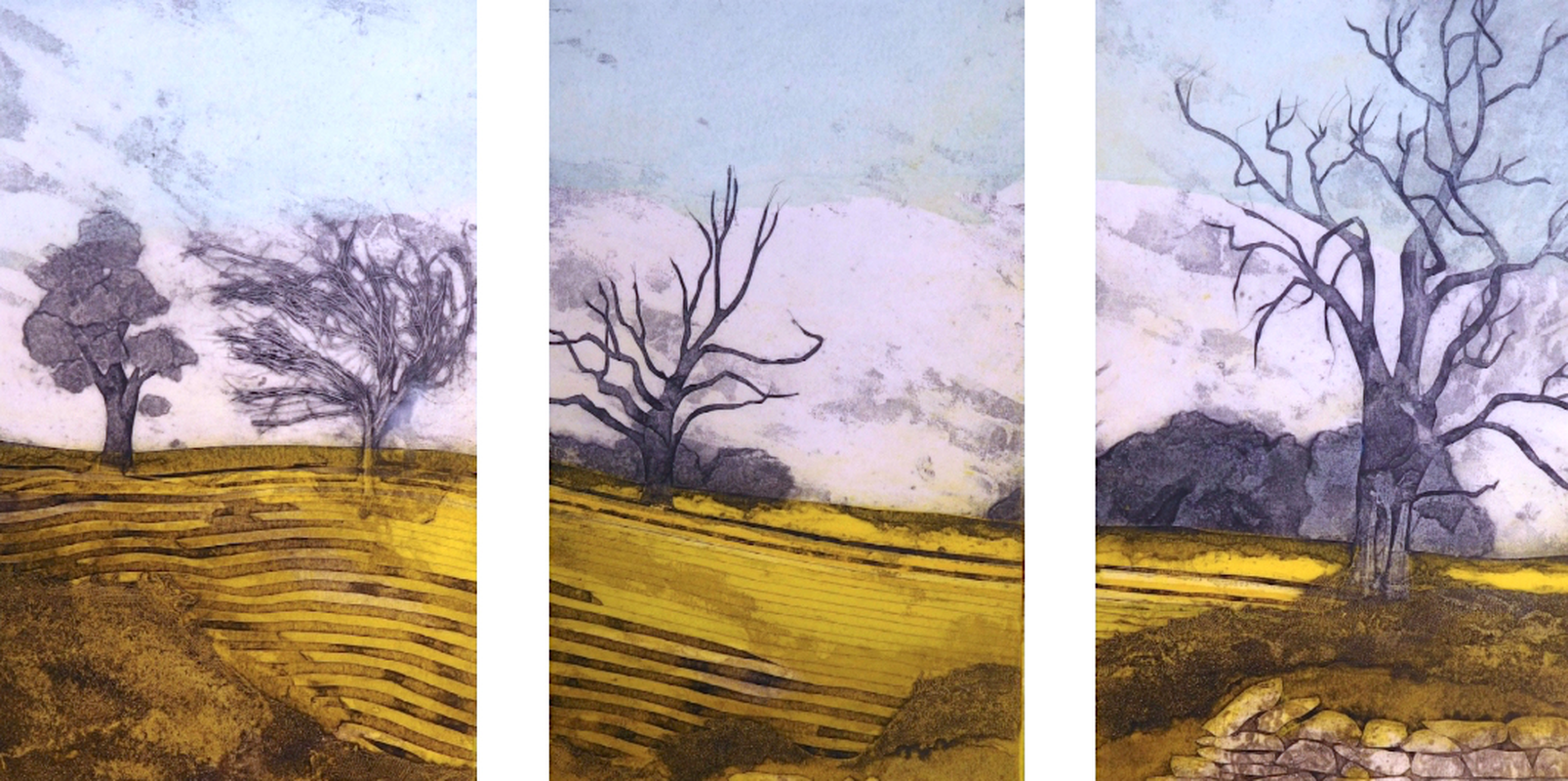
SARAH ROSS-THOMPSON AND THE ART OF COLLAGRAPHED PRINTS
I interviewed artist Sarah Ross-Thompson whose exceptional Collagraphed prints use fabrics, lichen, porridge and string to create images of the dramatic Scottish Highlands where she
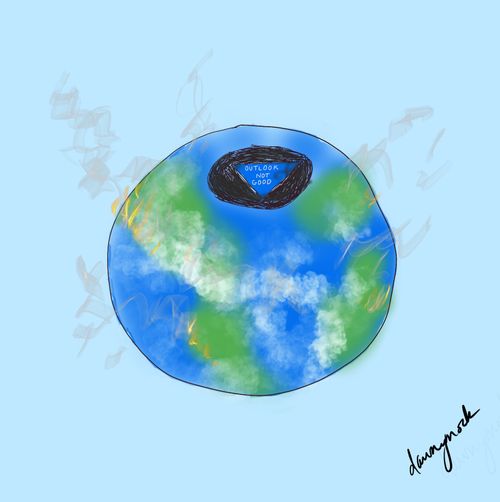

I interviewed Canadian cartoonist Dawn Mockler about how she works on cartoons that might be environmental or wordless but always witty – especially her famous pro-vaccination cartoon. Dawn says about her work, “The power of art to convey a message quietly is just the best thing of all.”
Leslie: How did your passion for drawing begin, grow and develop? Where did your talent come from and how did you work to improve it? Who and what circumstances encouraged you?
Dawn: I was a very shy child and remember colouring and drawing in kindergarten. I drew a lot of Disney characters (my parents bought a Disney encyclopedia for us… it was such a treasure). I liked how people looked at the thing I drew instead of me! And I liked how I could say something without saying anything. When I was 9 I won a province-wide poster contest- my drawing was a mother bird feeding its hatchlings – “taking care of nature’s wonders” was the caption. I won a plaque and $10! I guess I was hooked. My mom loved to get me to show my drawings to anyone who came to visit. Once I hit high school, I learned that I could make classmates laugh with my doodles. I am old enough to have passed notes in school! I took art in high school and learned so much from Mr. Saunders. He wanted me to pursue it as a career; my parents wanted me to take science. So science it was. Haha.
Leslie: What makes a good cartoon? How do you work on finding the initial concept and then putting that idea into an appropriate format?
Dawn: I am a big fan of the wordless cartoon- a powerful image can convey so much emotion. The best advice I got was, draw so your smartest aunt will get it. Funny you should ask where I get my ideas… I just posted this yesterday.

Honestly, my best ideas come when I’m out walking or running. Or trying to pay attention to an episode of Silent Witness. I’m terrible to watch TV with. Always doodling. Often on my iPad, sometimes on paper. I think the ones I draw using a photo reference are my best ones, but my most famous cartoon was drawn from thin air. My style is a bit loosely-goosey. Now that AI is everywhere, I am happy to have an imperfect style… no bot would be as messy! I used to draw on paper and scan images but found that cumbersome. Now I use Procreate and an Apple pencil – easy to edit, share, print. I love to paint as well, and have fun with my coloured cartoons.
Leslie: Tell us about your vaccine cartoon going viral and its uses since.
Dawn: Well, that cartoon surprised me! My friend Cathy wanted me to draw something that encouraged people to get a Covid vaccine ( this was before the vaccine existed). I had that idea rolling around my brain for a couple of days. I was very tired after my shift at physiotherapy clinic… the idea came to me (based on real conversation with my daughter years earlier). I drew it quickly, sitting in the living room with my husband watching TV. I sent it to my friend at the Association of Canadian Cartoonists for our “Cartoonists Against Covid” collection. He suggested it read left to right. (I agreed.) As I was changing it, my phone was going crazy! I had shared online and was getting so many shares. There are 2 versions that go around, but the one I have is the left-to-right one. I got so much love for that cartoon. The Vancouver Science Center features it (and an interview) on their YouTube channel. It was shared and liked by stars like Peter Frampton and Kirsten Dunst. For a kid from Belledune, New Brunswick, that was a pretty big deal! It was used by the Canadian Medical Association and is definitely my most popular cartoon.

Leslie: Can you describe the interrelation between your love of nature locally and some cartoons inspired by the theme? How did your sense of a climate emergency develop and how have you used your art to express it?
Dawn: I grew up in rural New Brunswick; we had no cable TV so we were always playing outside. We lived beside the ocean and went fishing with Dad, picked strawberries, cross-country skied. If I had to choose whether to help indoors or out, you would find me picking beans or peas on the garden. My best friend lived on a dairy farm and we had so much fun there too. I guess I knew where my food came from, and how much work went into producing it. I do remember learning about acid rain (we fixed that) in school, and even a mention of the greenhouse effect. (I earned a BSc Biology from Mt. Allison U 1987.) I saw Dr David Suzuki speak back in the early 2000s and was made aware of the very real threat to our existence. I worried then about what would happen if we continued to ignore the problem. I try to use my environmental art to raise awareness and hopefully change some minds. Twice I have been able to share my work in Toronto Globe & Mail- both times ai pitched an environmental cartoon, but they went for another idea. The Bylines news uses my environmental cartoons, and recently a Canadian NGO contacted me for some anti-fracking cartoons. I’m really excited about that. I know that these drawings are what I’m meant to do.

Leslie: How does the power of art affect you on a daily basis? Where do you experience it, and how does it enter into your being and change you?
Dawn: The power of art to convey a message quietly is just the best thing of all. It’s hard to describe, but I get antsy if I haven’t drawn or painted anything for a few days. I find it much like mediation- I get lost in my work and for a while, there is something I feel like I can control. When my work connects with people, that is a great feeling. I am definitely better expressing myself with lines and colour than with words. I guess my art has changed me in that it makes me kind of extroverted. Hiding behind my pencil. I’ve used my art in campaigns to release artists such as Eaten Fish, Nse Ramon (cartoonists who had been wrongfully imprisoned). The quiet girl learned to make some noise. I guess that’s the biggest way Art has transformed me!
Next week I interview computer expert and sustainability campaigner Dr Erlijn van Genuchten
ABOUT LESLIE TATE’S BOOKS:

I interviewed artist Sarah Ross-Thompson whose exceptional Collagraphed prints use fabrics, lichen, porridge and string to create images of the dramatic Scottish Highlands where she
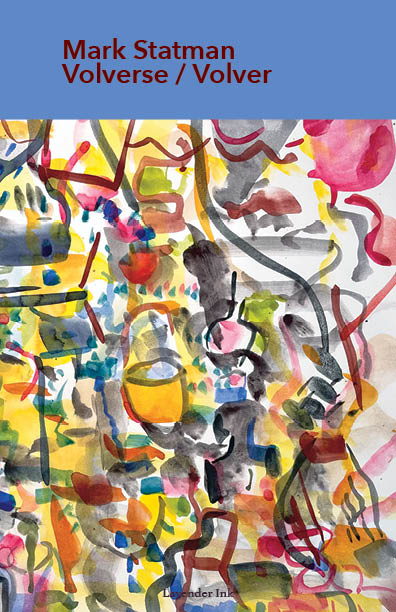
Part 2 of my interview with Mark Statman looks closely at Mark’s Latin American poetic influences, his life in Mexico and ends with an extract
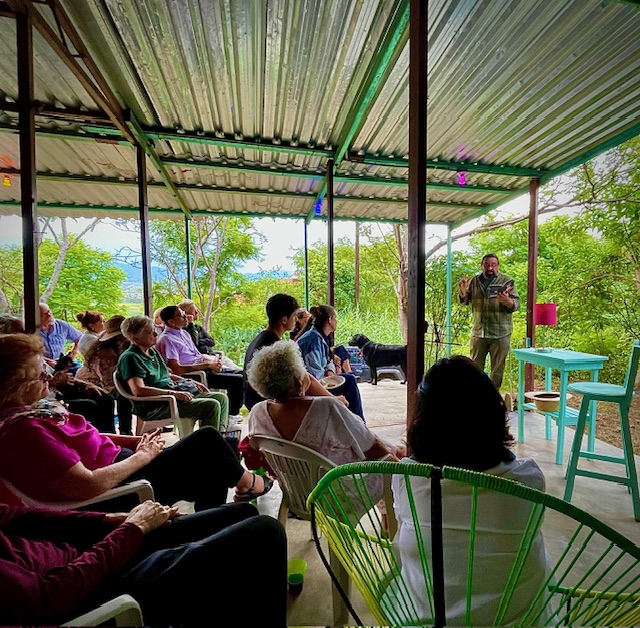
I interviewed international poet and translator Mark Statman about Volverse/Volver, his 14th published collection. Mark, who has won national arts awards, is Emeritus Professor of Literary

I interviewed Lisa Dart, finalist in the Grolier, Aesthetica and Troubadour Poetry Prizes and author of The Linguistics of Light (poems, Salt, 2008), Fathom (prose
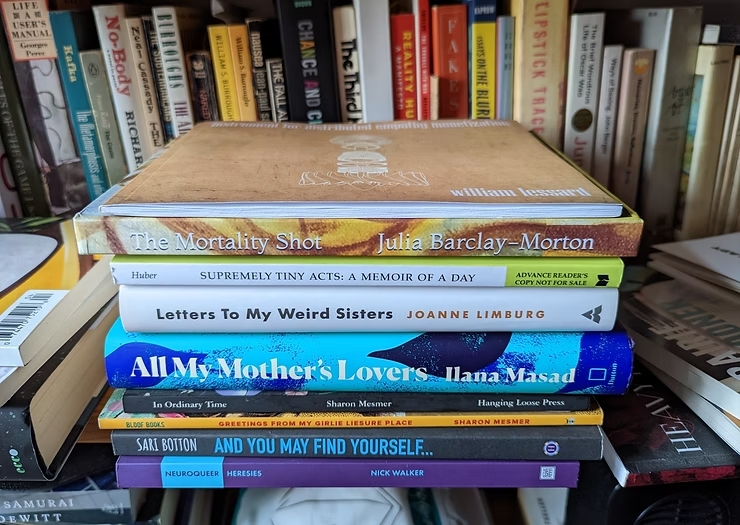
I interviewed writer Julia Lee Barclay-Morton about her experience of autism. Julia began as an experimental dramatist in New York, moving to the UK to
| Cookie | Duration | Description |
|---|---|---|
| cookielawinfo-checkbox-analytics | 11 months | This cookie is set by GDPR Cookie Consent plugin. The cookie is used to store the user consent for the cookies in the category "Analytics". |
| cookielawinfo-checkbox-functional | 11 months | The cookie is set by GDPR cookie consent to record the user consent for the cookies in the category "Functional". |
| cookielawinfo-checkbox-necessary | 11 months | This cookie is set by GDPR Cookie Consent plugin. The cookies is used to store the user consent for the cookies in the category "Necessary". |
| cookielawinfo-checkbox-others | 11 months | This cookie is set by GDPR Cookie Consent plugin. The cookie is used to store the user consent for the cookies in the category "Other. |
| cookielawinfo-checkbox-performance | 11 months | This cookie is set by GDPR Cookie Consent plugin. The cookie is used to store the user consent for the cookies in the category "Performance". |
| viewed_cookie_policy | 11 months | The cookie is set by the GDPR Cookie Consent plugin and is used to store whether or not user has consented to the use of cookies. It does not store any personal data. |